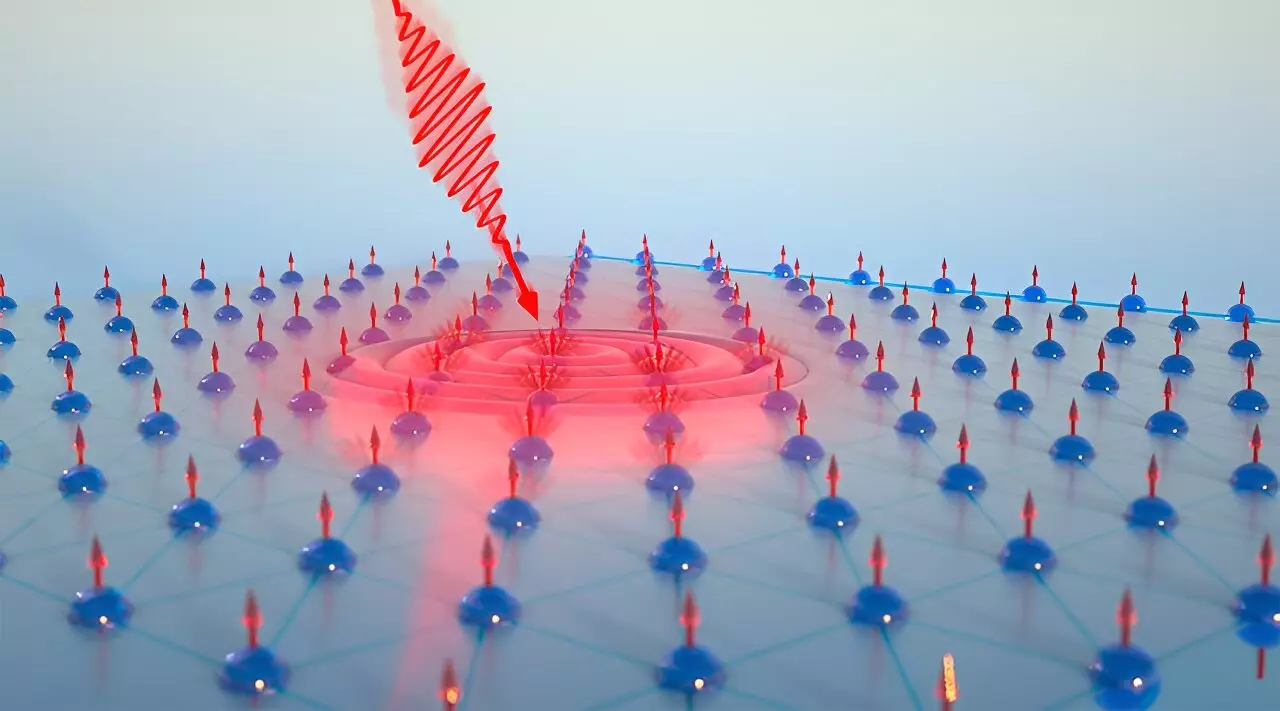In an age where digital information proliferates at unprecedented rates, the quest for revolutionary data storage technologies has never been more urgent. Traditional memory devices face limitations in speed and energy efficiency, igniting the search for new materials that can enhance performance. A recent study by researchers at the University of Chicago Pritzker School of Molecular Engineering (PME) sheds light on an unexpected contender: manganese bismuth telluride (MnBi2Te4). By delving into its unique properties, these scientists may have struck upon a pathway to develop an optical memory system that is both rapid and sustainable.
At the heart of this research is MnBi2Te4, a complex material known for its intriguing magnetic characteristics. During their investigations, researchers uncovered an astonishing responsiveness of its magnetic properties to light exposure. This discovery opens up new possibilities: by employing lasers to alter its magnetic states, they could effectively encode and retrieve data. Shuolong Yang, assistant professor of molecular engineering and the lead author of the study, emphasized the significance of these findings. “We began with a fundamental scientific inquiry and serendipitously discovered qualities in MnBi2Te4 that hold great promise for engineering applications,” he remarked.
The team’s findings are documented in a paper published in **Science Advances**. They illustrated how electrons within this material navigate between two crucial states: a topological state proficient in encoding quantum information and another state responsive to light, ideal for optical storage.
Previously, MnBi2Te4 was distinguished as a potential magnetic topological insulator (MTI), a classification that describes materials that are insulating internally yet permit conductive electricity along their surfaces. The fulfillment of this classification paves the way for unique transport phenomena, enabling quantum data to travel along designated paths, termed “electron freeways.” However, experimental challenges have thwarted the realization of these topological states in MnBi2Te4.
Yang elucidated, “Our initial inquiry sought to demystify the underlying reasons for the hurdles faced in exhibiting these topological properties.” To tackle this enigmatic challenge, the team employed advanced spectroscopy techniques to visualize electron activity within MnBi2Te4 in real time, collaborating with experts who possess expertise in magneto-optical measurements.
Through the combination of time- and angle-resolved photoemission spectroscopy and time-resolved magneto-optical Kerr effect (MOKE) measurements, the researchers achieved a clearer understanding of the interplay between light and the electrons of MnBi2Te4. The results were illuminating; the material’s lack of efficient topological characteristics stemmed from a quasi-2D electronic state that conflicted with the desired topological state.
Yang explained, “Essentially, we encountered a different category of surface electrons that substituted the original topological electrons. Nevertheless, we found that this quasi-2D state harbored its unique and valuable properties.” In particular, this state exhibited a strong coupling to magnetic characteristics influenced by incoming light, which was less advantageous for quantum data transport but presented new horizons for optical memory applications.
With these revelations, Yang and his team are gearing up for a series of experiments aimed at harnessing a laser to manipulate the properties of MnBi2Te4. The prospect of utilizing this material for optical memory devices appears promising, with potential efficiencies that could vastly surpass conventional electronic memory systems currently in use.
Yang suggested that by enhancing the understanding of the delicate balance between the two electronic states, there could be significant implications not just for optical memory, but also for reinvigorating MnBi2Te4’s capacity as an MTI. “We may unlock the key to modulating the equilibrium between the predicted theoretical state and this new quasi-2D electronic state,” he said, hinting at a fertile ground for future research and technological advancement.
While the study of MnBi2Te4 is still in its early stages, the implications of these discoveries could ultimately redefine how information is stored and accessed. As researchers continue to explore the material’s properties, we may be on the verge of a new era in data storage technology that is not only faster but also more energy-efficient.


Leave a Reply